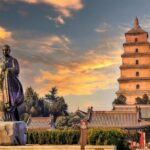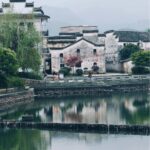
“Heaven above, Suzhou and Hangzhou below” is a famous Chinese saying that highlights the beauty of these two cities.

In this comprehensive Suzhou travel guide, we’ll cover transportation, attractions, food, and tips to help you plan the perfect trip to Suzhou. Let’s get started!
Transportation Guide
📌 Getting to Suzhou from Other Cities
Suzhou doesn’t have an airport, so if you’re traveling from a distant city, it’s recommended to fly to Wuxi first and then make your way to Suzhou. The distance between Wuxi Airport and Suzhou is about 40 kilometers, and a taxi ride to Guanqian Street takes around 1 hour. Alternatively, you can take the airport shuttle bus for 60 yuan per person.
A more cost-effective way is to take a ✈️ flight → 🚇 subway → 🚄 high-speed train.
From Wuxi Airport, take subway line 3 to Wuxi New District Station, then take the high-speed train to Suzhou Railway Station. Suzhou Railway Station is located in the northern part of Suzhou’s ancient city, very close to important attractions like the Humble Administrator’s Garden. The total cost is around 14 yuan, and the journey takes about 30 minutes.
📌 Getting Around Suzhou
For long-distance travel within Suzhou, the subway is the best choice, followed by public buses. If you’re traveling in a group, taking a taxi is an option, but keep in mind that traffic may be congested during the May Day holiday. Renting an electric scooter is not recommended, as Suzhou has recently tightened regulations on electric scooters, and it’s easy to get fined by the police if you’re not familiar with the area.
Attraction Guide
Here are the must-visit attractions in Suzhou that we’ve compiled for you. You can use this as a reference to plan your itinerary based on your available time.
Suzhou’s Four Famous Gardens
Humble Administrator’s Garden
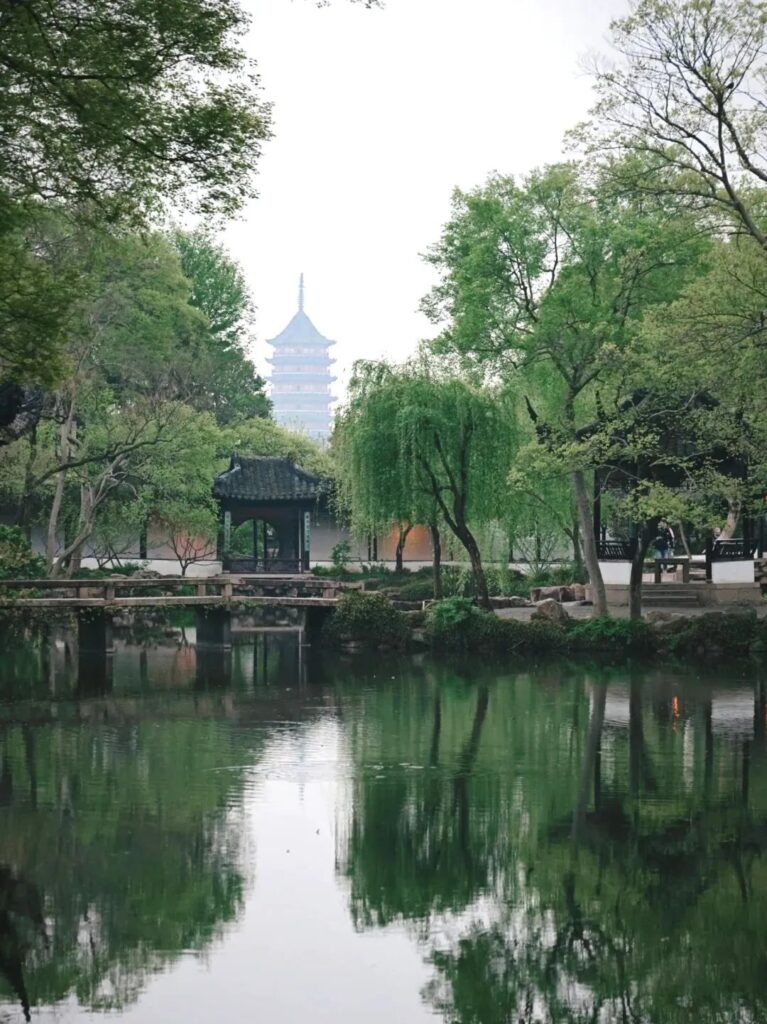
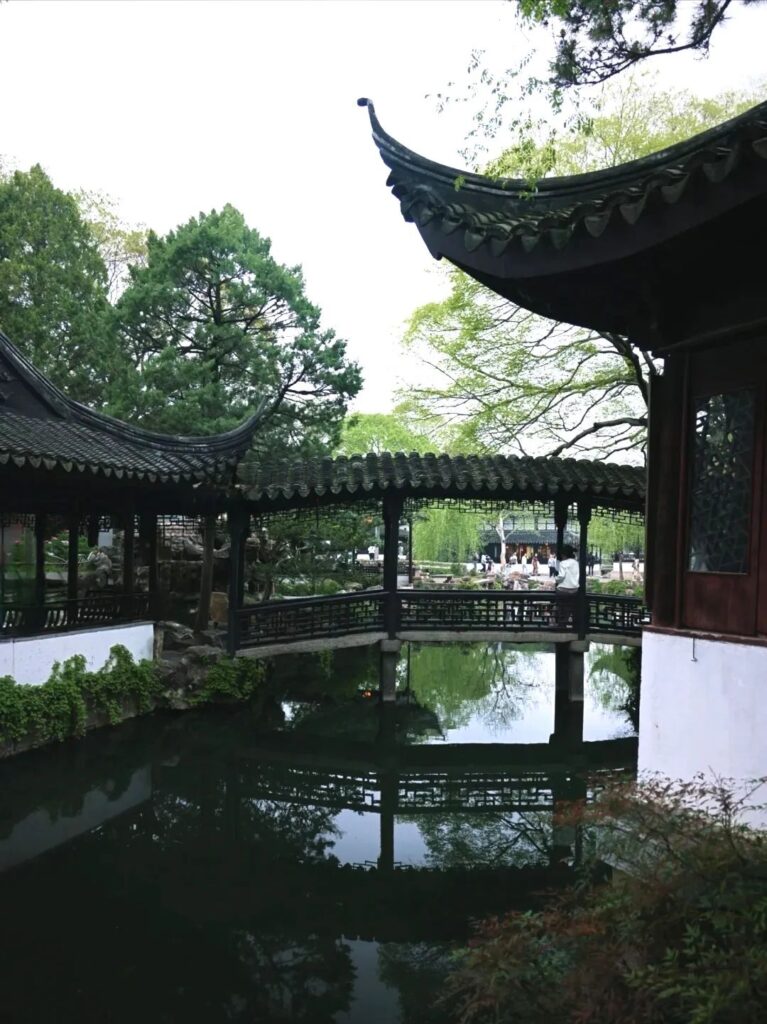
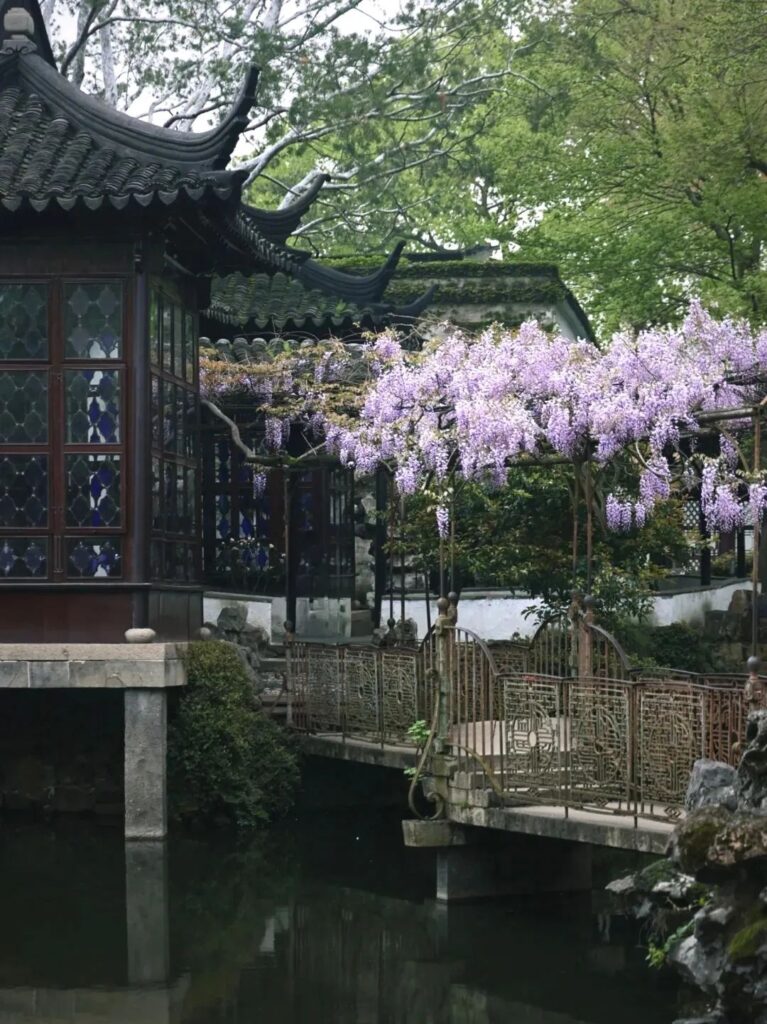

The Humble Administrator’s Garden is one of the four most famous gardens in China and a representative of Jiangnan classical gardens. It’s divided into three parts: east, middle, and west. The design is centered around the buildings and the water, with water surrounding three sides and the main part facing north. There are more than 20 pavilions and towers in the garden, each with its unique design and scenery, making it a place worth exploring in detail.
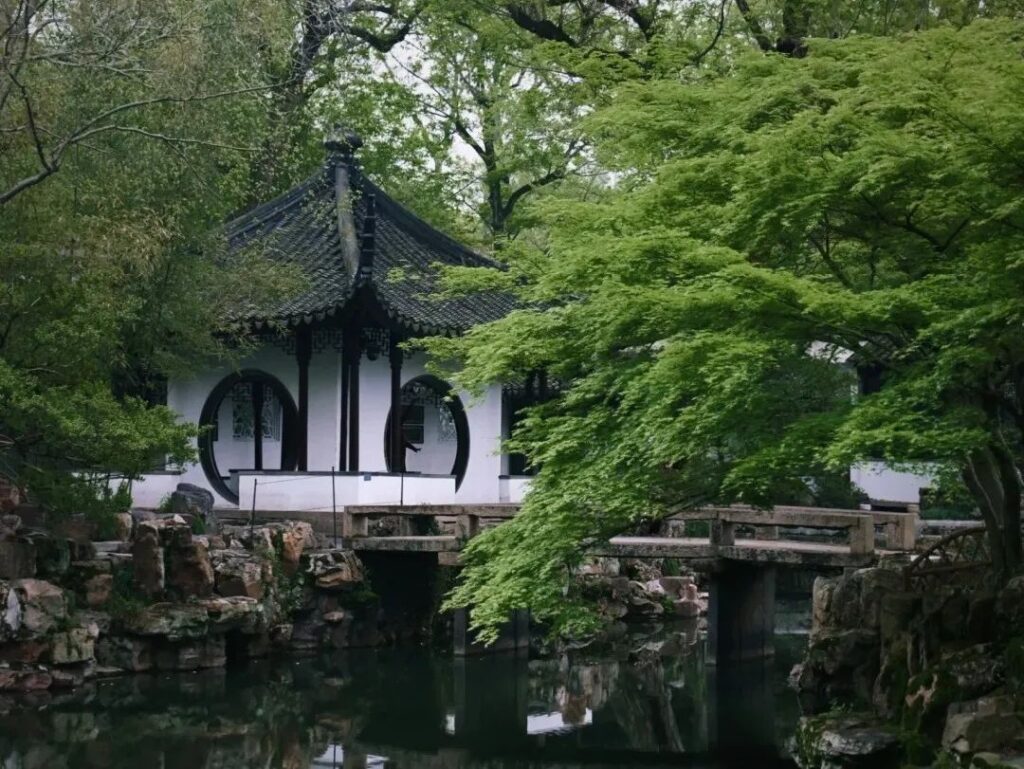
📍Address: No. 178, Dongbei Street, Gusu District
🎫Tickets: 70 yuan/person during the low season, 90 yuan/person during the high season, half-price for students and elderly, reservation required!
⏰Opening Hours: 07:30-17:00, last entry at 16:30
🚇Transportation: Take subway line 4 and get off at Beisita Station
Lion Grove Garden
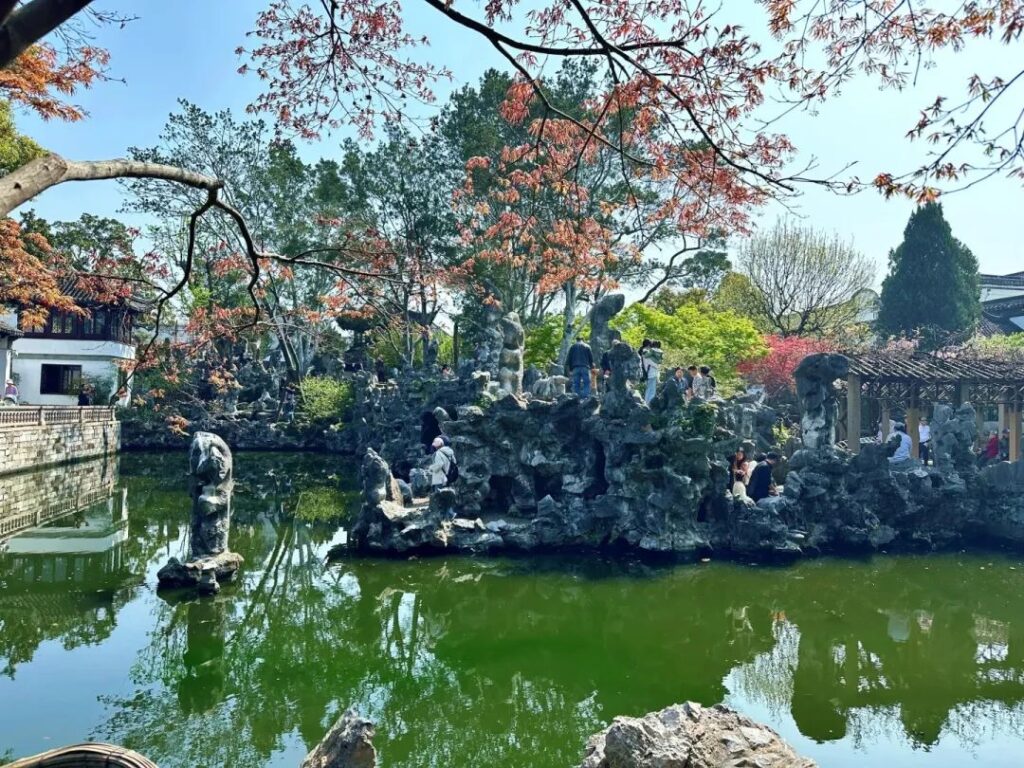
Lion Grove Garden is one of the four famous gardens in Suzhou and a national 4A-level tourist attraction. It got its name from the numerous rock formations in the garden that resemble lions. The rockery in the garden is like a maze, with changing scenery at every step, and the pavilions and stones create a unique atmosphere.

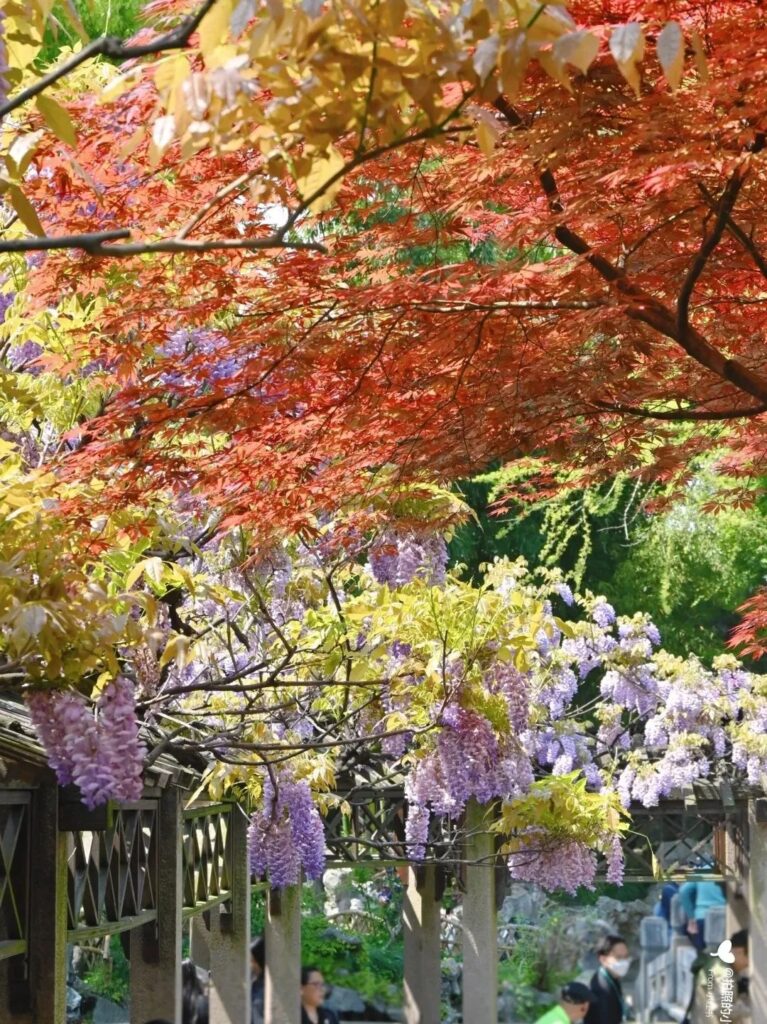
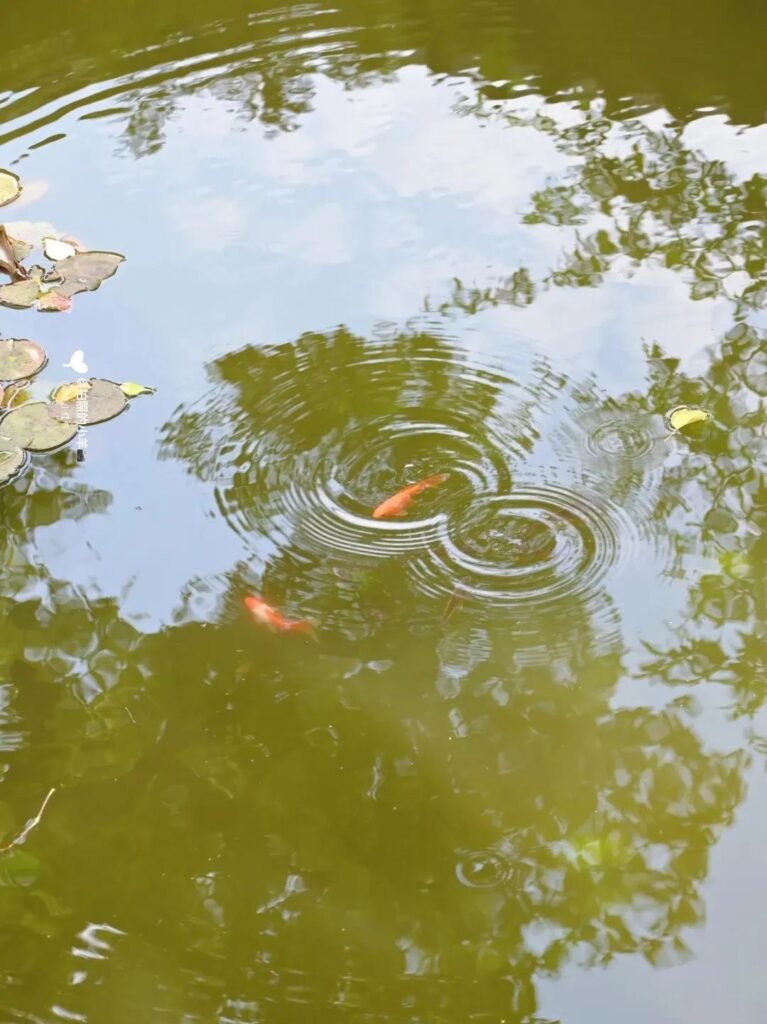

📍Address: No. 23, Yuanlin Road, Gusu District
🎫Tickets: 30 yuan/person during the low season, 40 yuan/person during the high season, half-price for students and elderly, reservation required!
🚇Transportation: It’s located near the Humble Administrator’s Garden, so you can visit it after touring the Humble Administrator’s Garden.
⏰Opening Hours: 07:30-17:00, last entry at 16:30
Lingering Garden

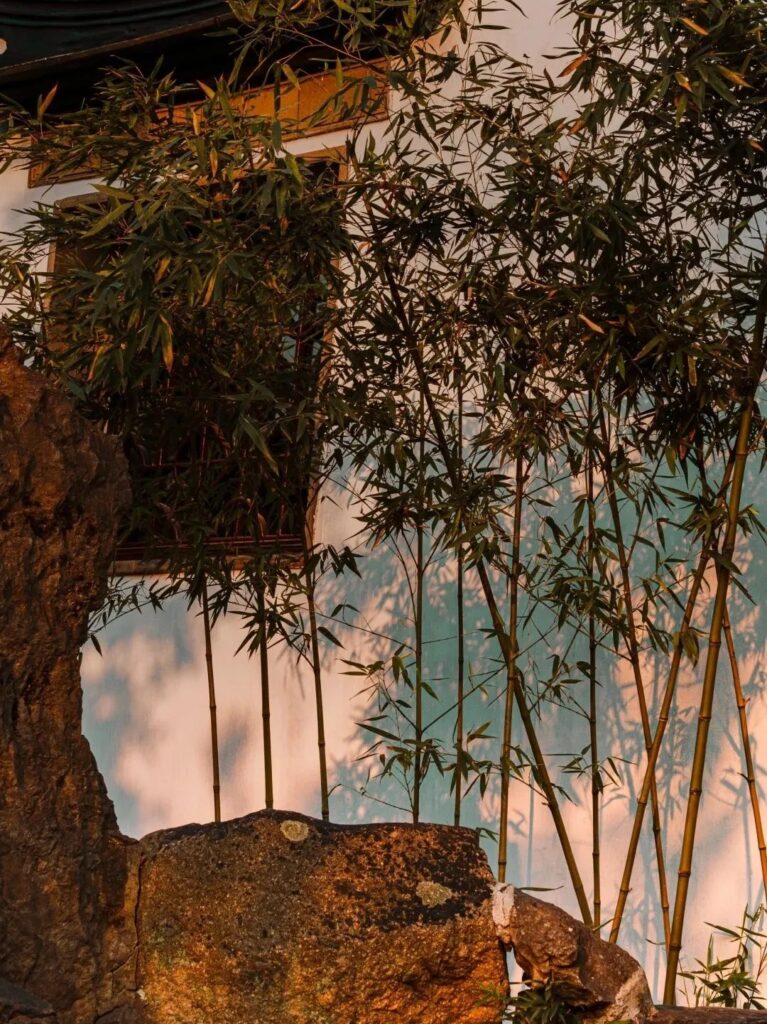
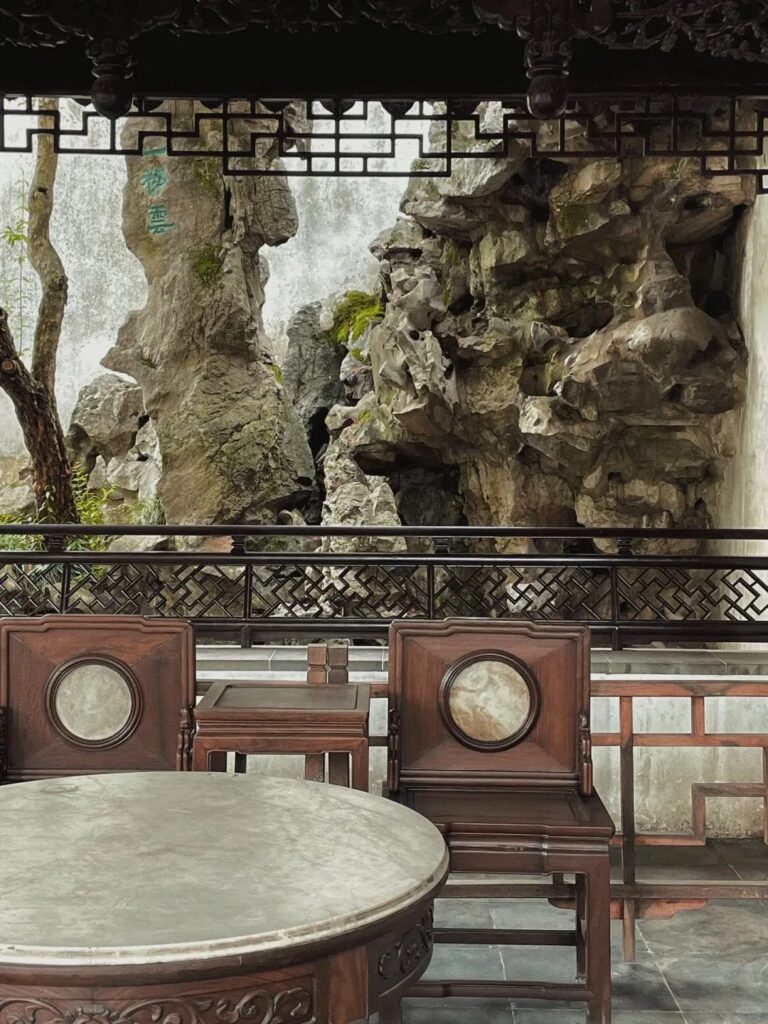
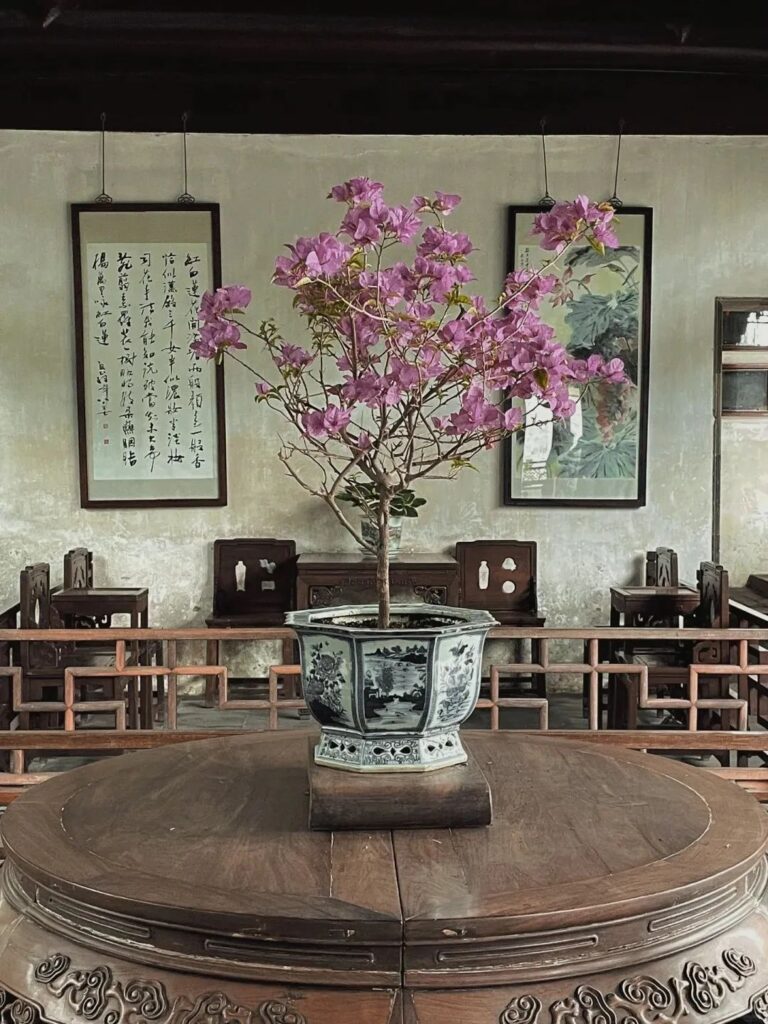
The Lingering Garden is also one of the four most famous gardens in China, divided into four parts: middle, east, west, and north. The eastern part focuses on architecture, with luxurious halls and exquisite courtyards, as well as a collection of strange peaks and beautiful stones. The middle part features beautiful mountains and water, with ancient trees covering the sky.
The northern part is mainly a bonsai garden, while the western part has a serene environment, making you feel like you’re in the middle of the mountains. It’s a model of ancient garden art and is known as the “crown of gardens in Wuzhong.”
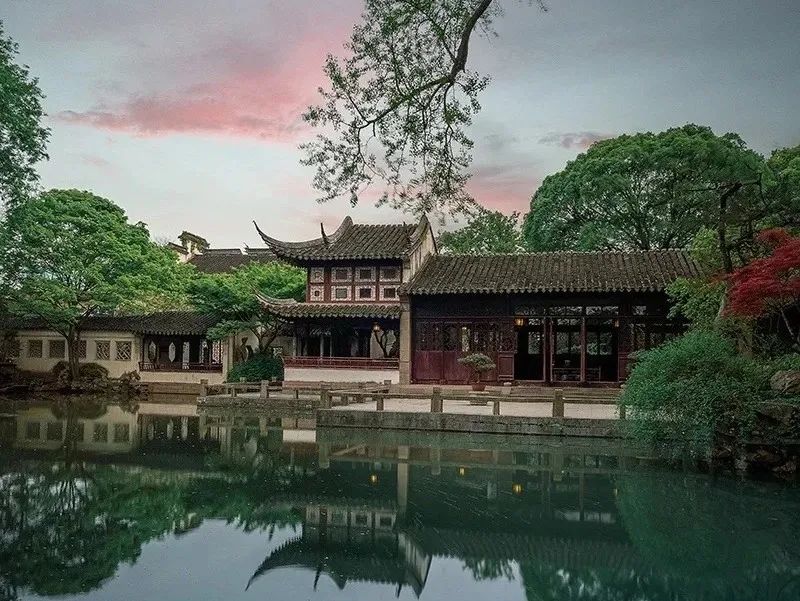
📍Address: No. 338, Liuyuan Road, Gusu District
⏰Opening Hours: 07:30-17:00, last entry at 16:30
🚇Transportation: Take subway line 2 and get off at Shilu Station
🎫Tickets: 55 yuan/person during the high season, 45 yuan/person during the low season, half-price for students and elderly, reservation required!
Canglang Pavilion

As one of the four famous gardens in Suzhou, Canglang Pavilion was built by the water during the Qingli period of the Northern Song Dynasty. It was named after its owner Sun Shunqin’s saying, “The water of Canglang is clear, I can wash my tassel; the water of Canglang is muddy, I can wash my feet.” It’s also the Canglang Pavilion mentioned in the book “Six Records of a Floating Life,” where the clear breeze and bright moon are priceless, and the nearby water and distant mountains are full of emotion.
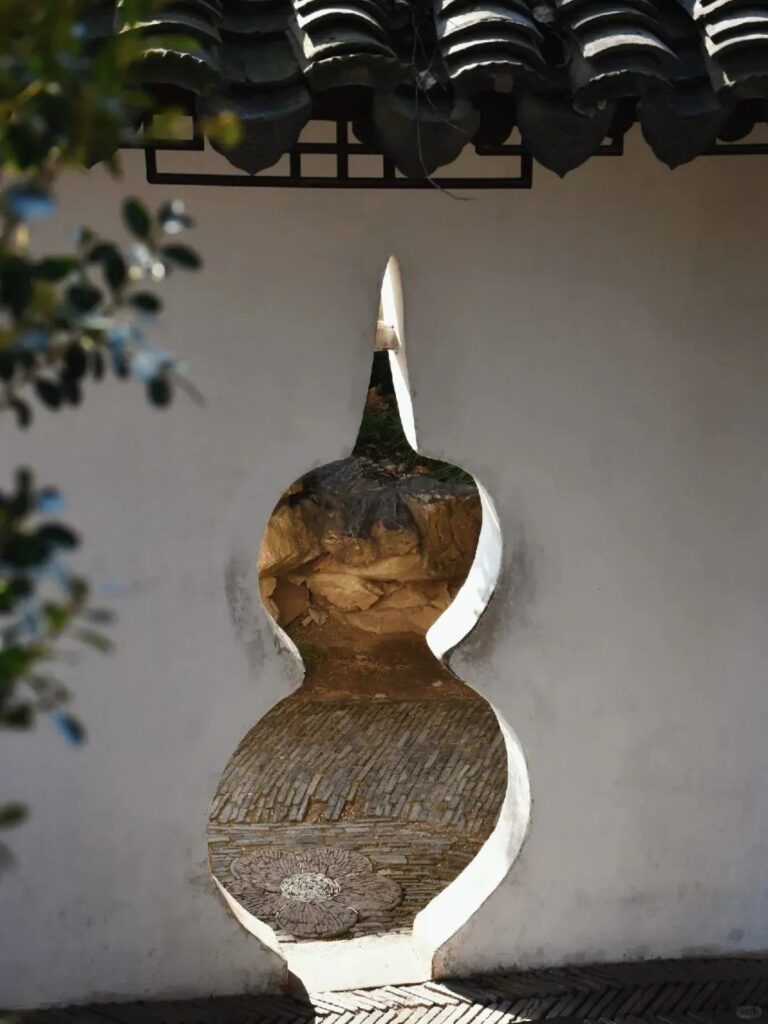
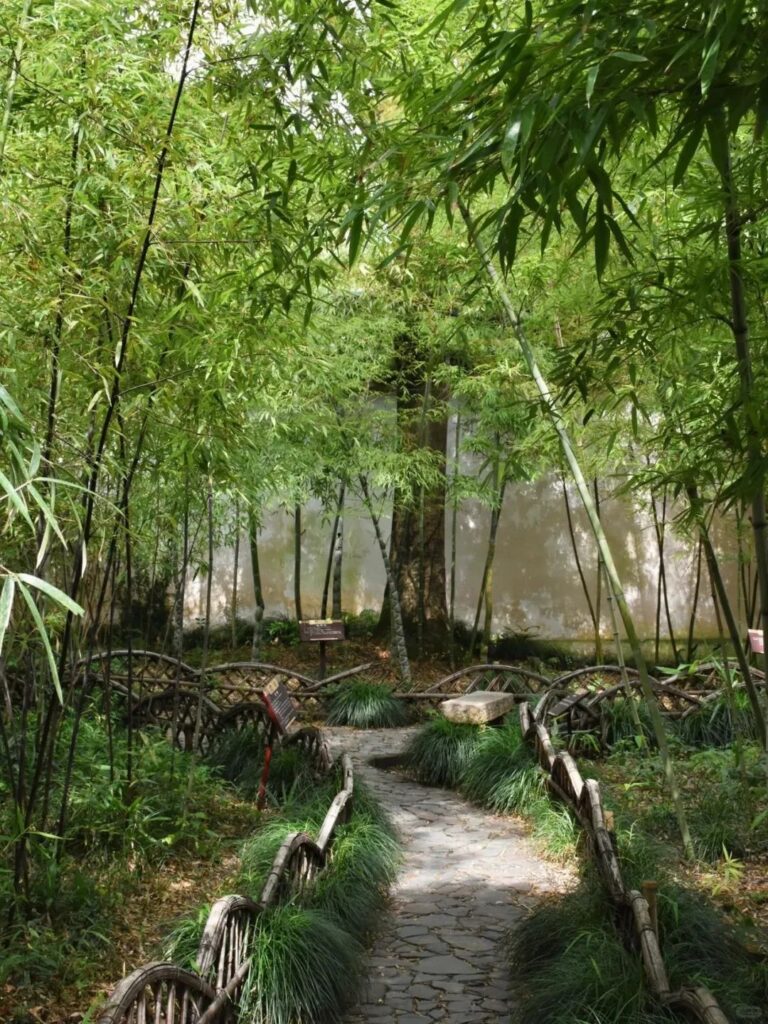
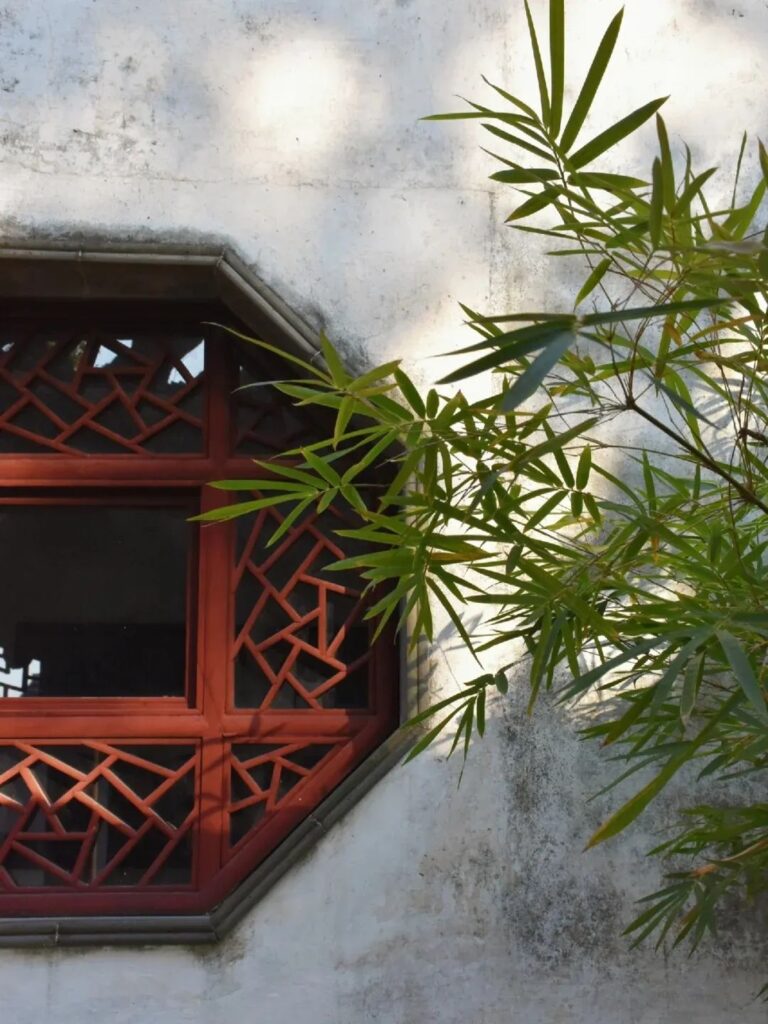

📍Address: No. 3, Canglangting Street, Renmin Road, Gusu District
⏰Opening Hours: 07:30-17:00, last entry at 16:30
🎫Tickets: 15 yuan/person, half-price for students and elderly, reservation required
🚇Transportation: Take subway line 4, get off at Sanyuanfang Station, and walk for 5 minutes from Exit 2
Tiger Hill Scenic Area

Tiger Hill Scenic Area is located in the northwest corner of Suzhou’s ancient city and has a history of more than 2,500 years. It’s known as the “No. 1 Scenic Spot in Wuzhong” and “No. 1 Hill in Wuzhong,” and its history can be traced back to the Spring and Autumn Period when King Helü of Wu built a palace here.
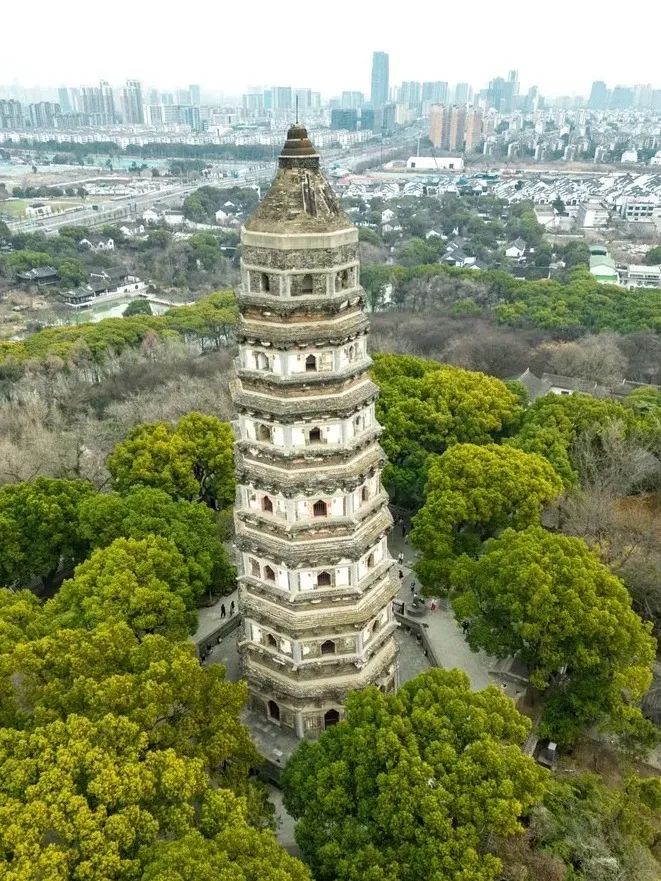
At the top of Tiger Hill, there is a Yunyan Temple Pagoda (Tiger Hill Pagoda), which is the highlight of the scenic area. Due to uneven settlement of the foundation and other reasons, the top of the pagoda has gradually tilted by 2.34 meters, making it the No. 1 leaning pagoda in China.
💰Tickets: 70 yuan/person, including a round-trip shuttle bus ticket to Tiger Hill Wetland Park, purchase online in advance, free with a garden card.
🕒Opening Hours: 7:30-18:00 from May to October (ticket sales stop at 17:00, ticket check stops at 17:30)
🚗Self-driving: There are parking lots at both the south and north entrances of the scenic area. The parking fee is 6 yuan for the first hour and 2 yuan for every half an hour thereafter.
🚤Rowing Boat: There are man-powered rowing boats on the Huanshan River. A full circle around the hill costs 160 yuan/boat (for four people), and a half circle to the north entrance costs 100 yuan/boat.
🛥️Electric Boat: At Li Hongzhang Pier outside the south entrance of the scenic area, you can take an electric boat along the Shantang River directly to Bai Juyi Pier in the Seven-Mile Shantang Scenic Area for 50 yuan/person.
🧳Luggage Storage: Backpacks can be stored for 10 yuan/day and suitcases for 20 yuan/day at the tourist center.
Suzhou Museum
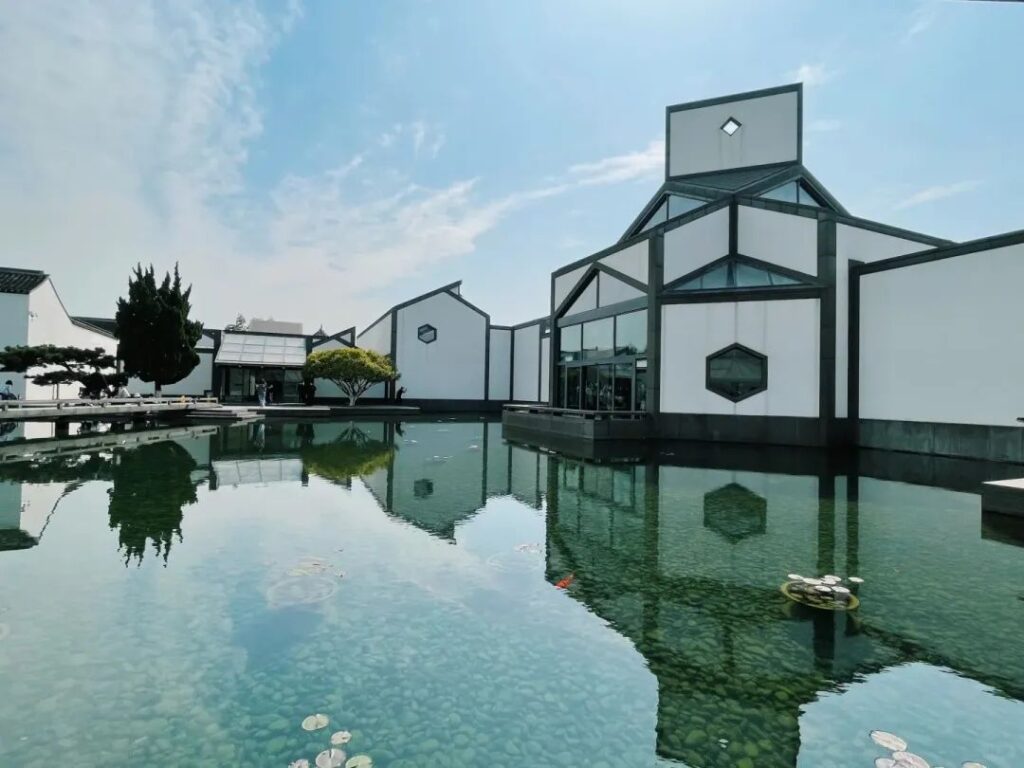
Designed by the renowned architect I.M. Pei as his last masterpiece, the Suzhou Museum boasts a unique architectural style. Pei, who also designed the Louvre Pyramid in Paris and the Bank of China Tower in Hong Kong, created a true work of art with this museum.
The building itself is a masterpiece, with stone bamboo as the motif and light and shadow as the scenery. As you move through the space, the views change, offering an endless array of beauty.
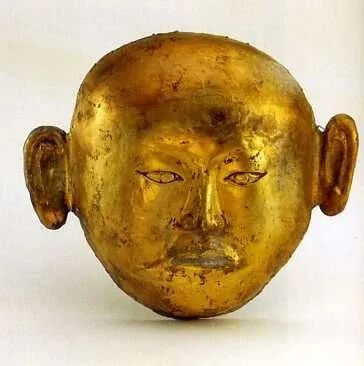
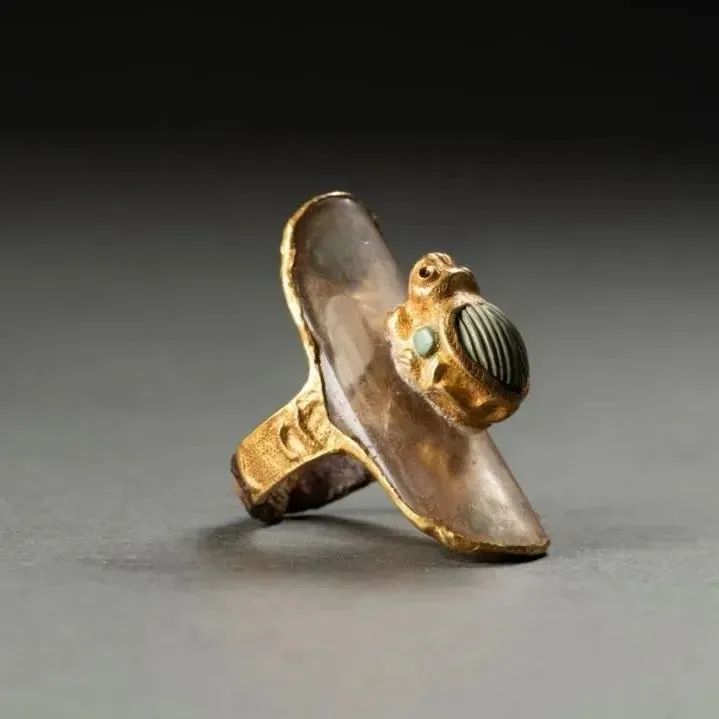
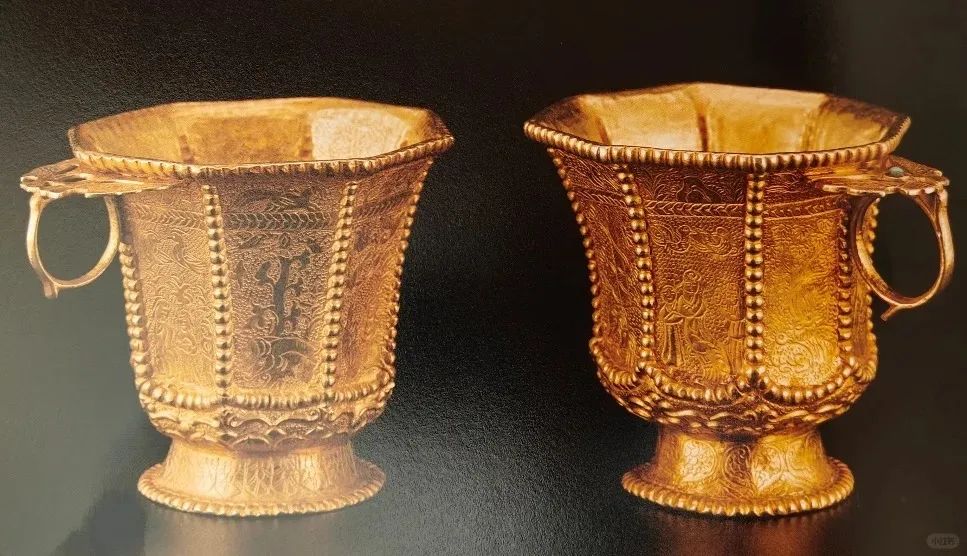

The museum houses four main exhibitions: Wudi Yizhen (Treasures of Wu Land), Wuta Guobao (National Treasures of Wu Pagodas), Wuzhong Fengya (Elegance of Wuzhong), and Wumen Shuhua (Calligraphy and Painting of Wumen). The collection totals 24,819 pieces/sets, with each exhibit serving as a witness to history and telling the story of Suzhou’s past and glory. Highlights include the Pearl Sarira Pagoda, the Secret-colored Porcelain Lotus Bowl, and the Painted Four Heavenly Kings Wooden Box.
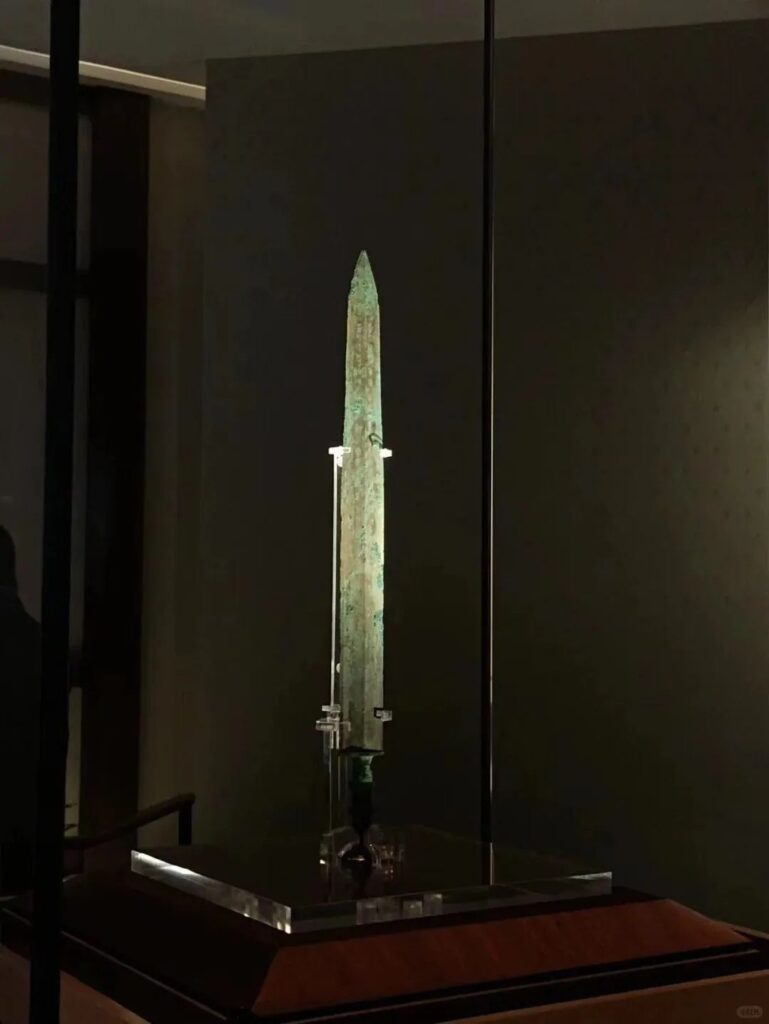
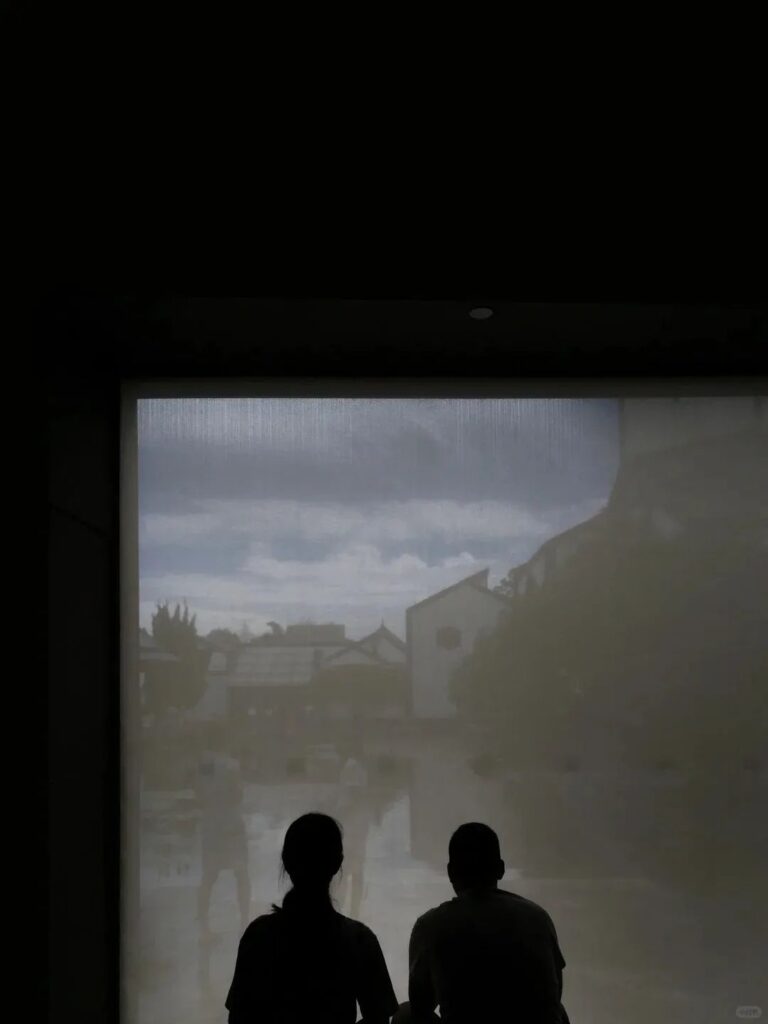
📍Address: No. 204, Dongbei Street
🚇Transportation: Metro Line 4, Beisita Station, Exit 1 (taking a taxi is not recommended)
⏰Opening Hours: 9:00-21:00 (last entry at 20:00, closed on Mondays)
🎫Tickets: Free, advance reservation required
Pingjiang Road, Suzhou
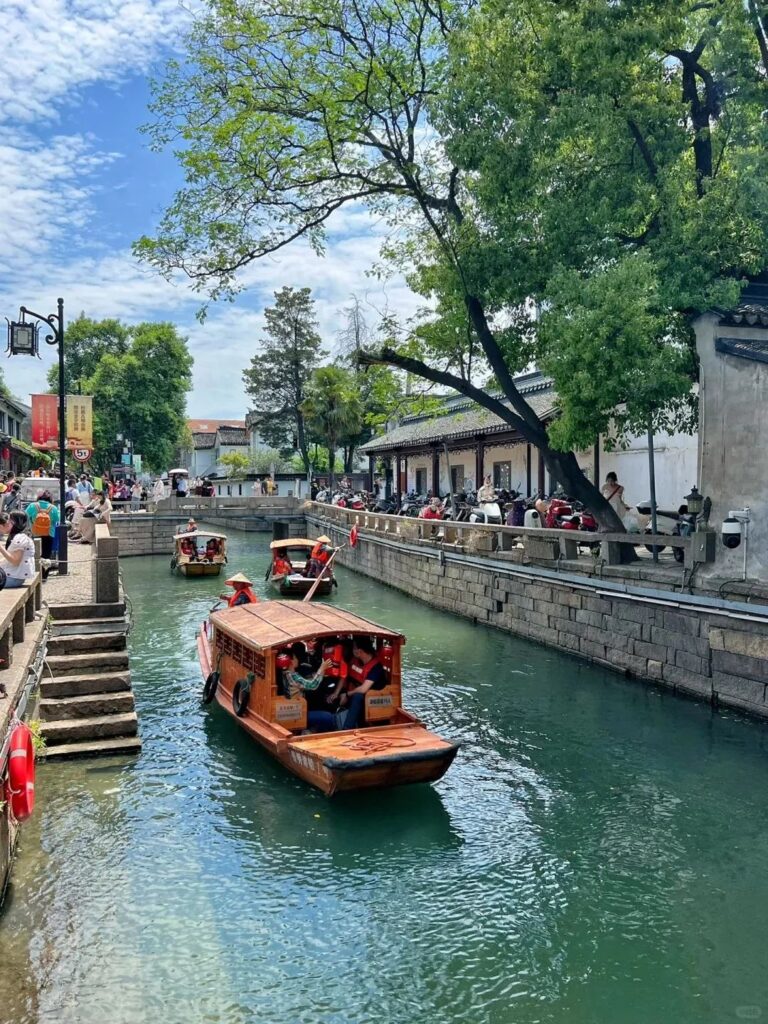
A single road, half the history of Suzhou. The Pingjiang Road area is built along a street and alley following the Pingjiang River, with many historically significant alleys on both sides. The road is famous for its “parallel water and land, adjacent river and street” feature. As a microcosm of ancient Suzhou, it showcases the typical Jiangnan water town style with white walls, black tiles, small bridges, flowing water, and old-style houses.



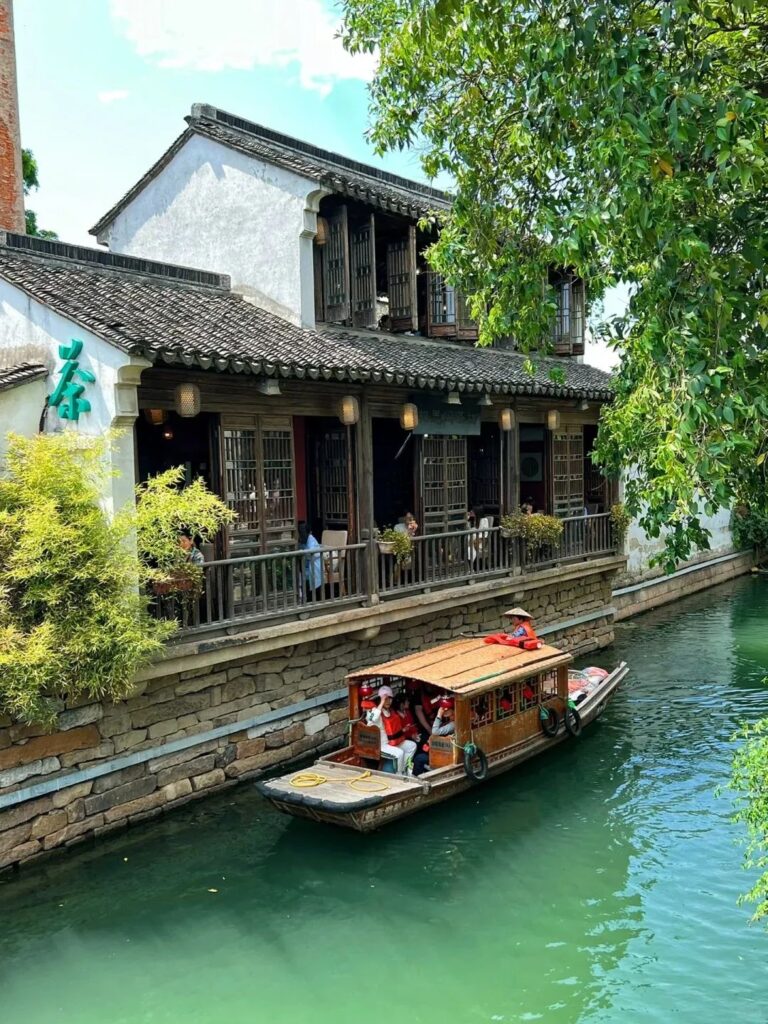
📍Address: Pingjiang Road, Suzhou
⏰Opening Hours: 24/7
🎫Pingtan Performance: Tickets can be purchased online or on-site, but regardless of the method, you need to queue to select a session. Master Wu Liangying’s “Shengsheng Man” and “Qinhuai Jing” are performed here. You can call in advance to inquire before visiting!
🚤Rowing Boat: Boat tickets are 40 yuan/person for a round trip of about 30 minutes. You can wear Hanfu on the boat and take beautiful photos. The scenery along the way is truly stunning!
Shantang Street, Suzhou
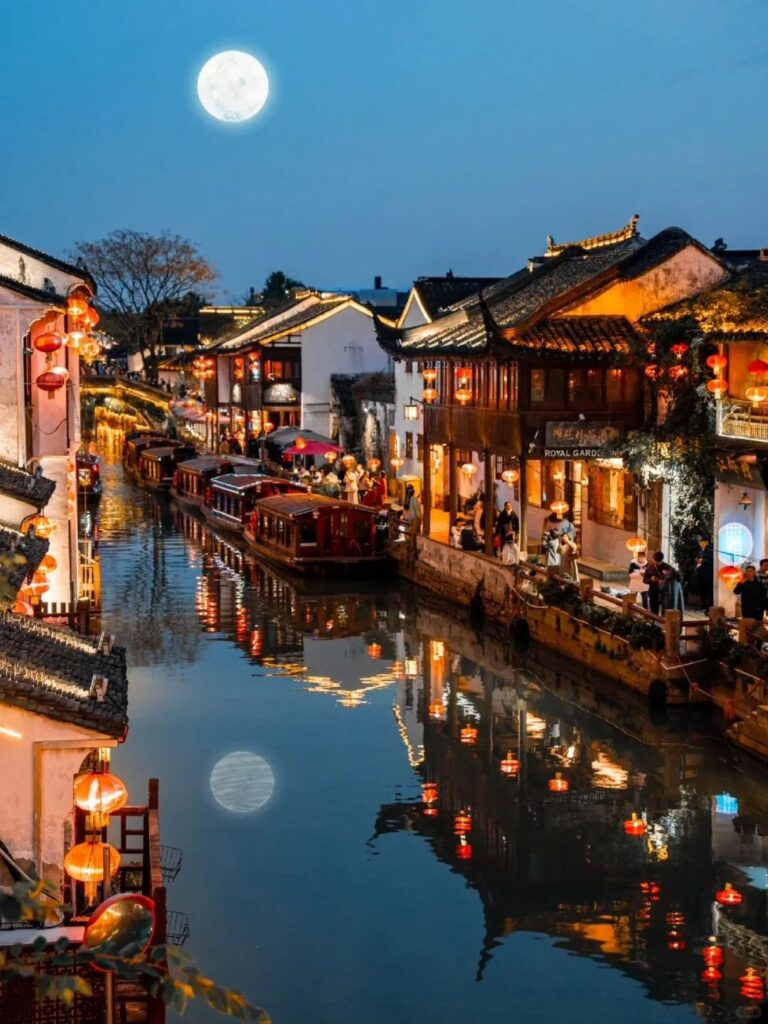
This is the place described by Cao Xueqin in his novel as the first or second most prosperous and fashionable place in the world of mortals. Boats shuttle back and forth, and people throng the street. Be sure to visit Shantang Street in the evening. When the lights are on, you’ll know you’ve arrived in the real Jiangnan.

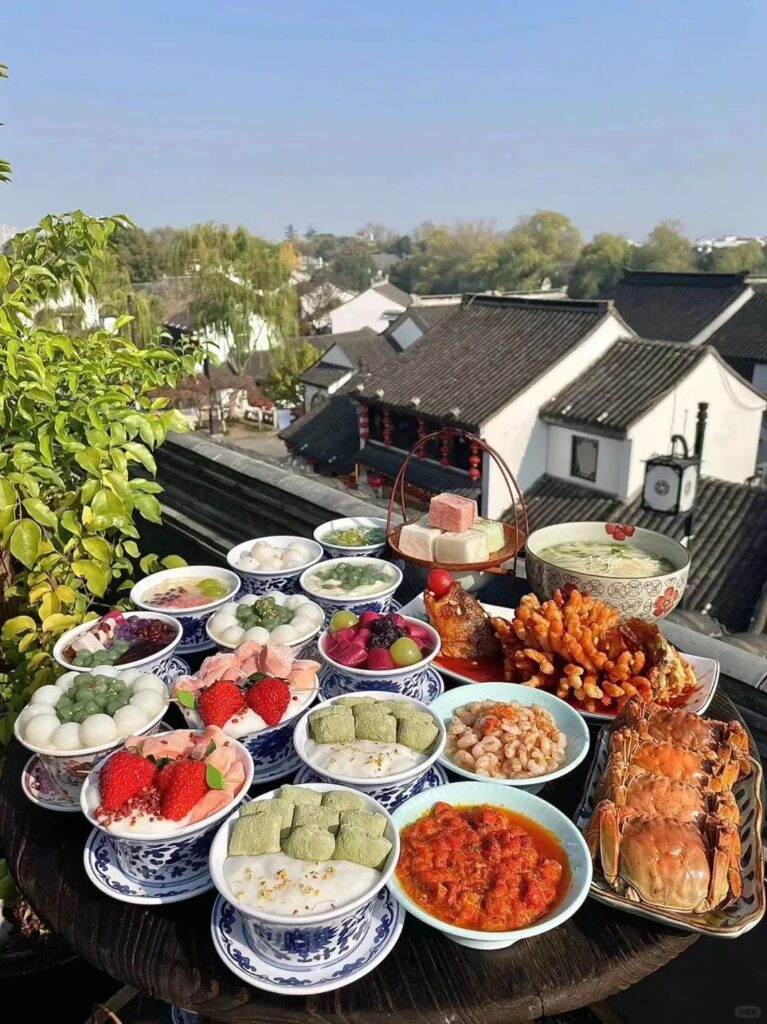
📍Address: Shantang Street, Suzhou
🎫Tickets: Free
🚇Transportation: Metro Line 2, Shilu Station
⏰Best Time to Visit: 17:00-20:00. The red lanterns light up around 5:30 p.m., and the combination of red lanterns and blue hour is truly stunning!
Xiyuan Temple, Suzhou
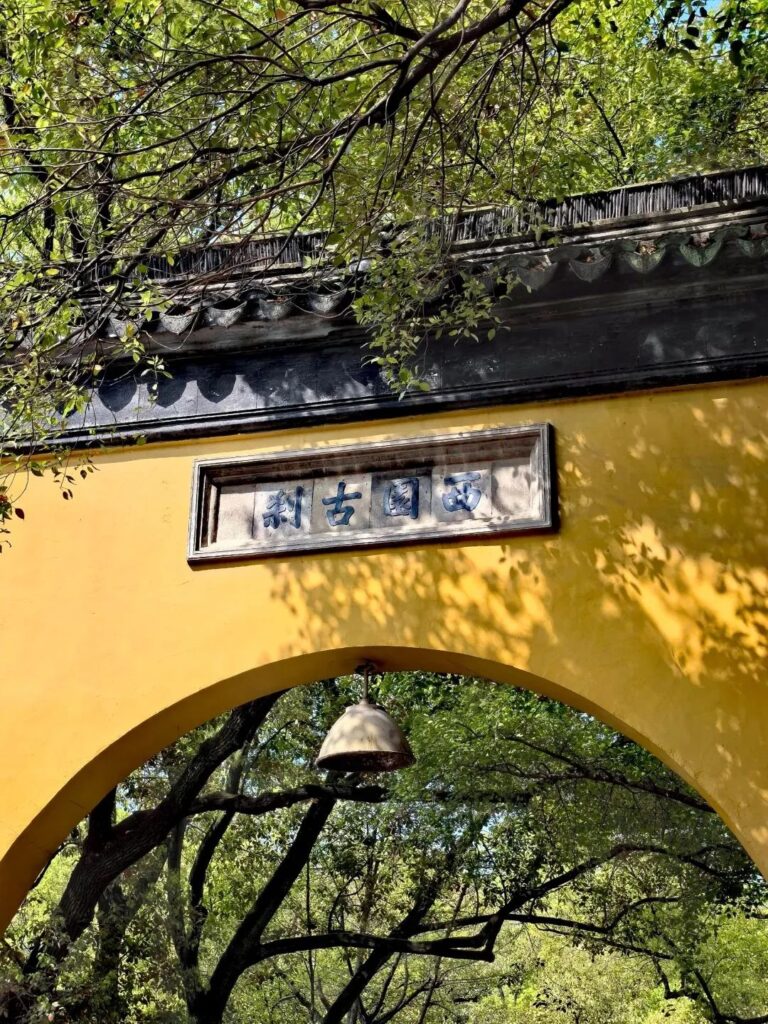
Xiyuan Temple, initially named Guiyuan Temple, was first built during the Yuan Dynasty (1264-1294 AD). When Xu Tai, the Ming Dynasty’s Taipu Shiqing (a high-ranking official), retired to Suzhou, he built two gardens: the East Garden (now Liuyuan) and the decaying Guiyuan Temple, which he transformed into a residential garden named Xiyuan (West Garden). Later, his son donated the garden to the temple, which was renamed Jiechuang Lüsi by Master Maolin.

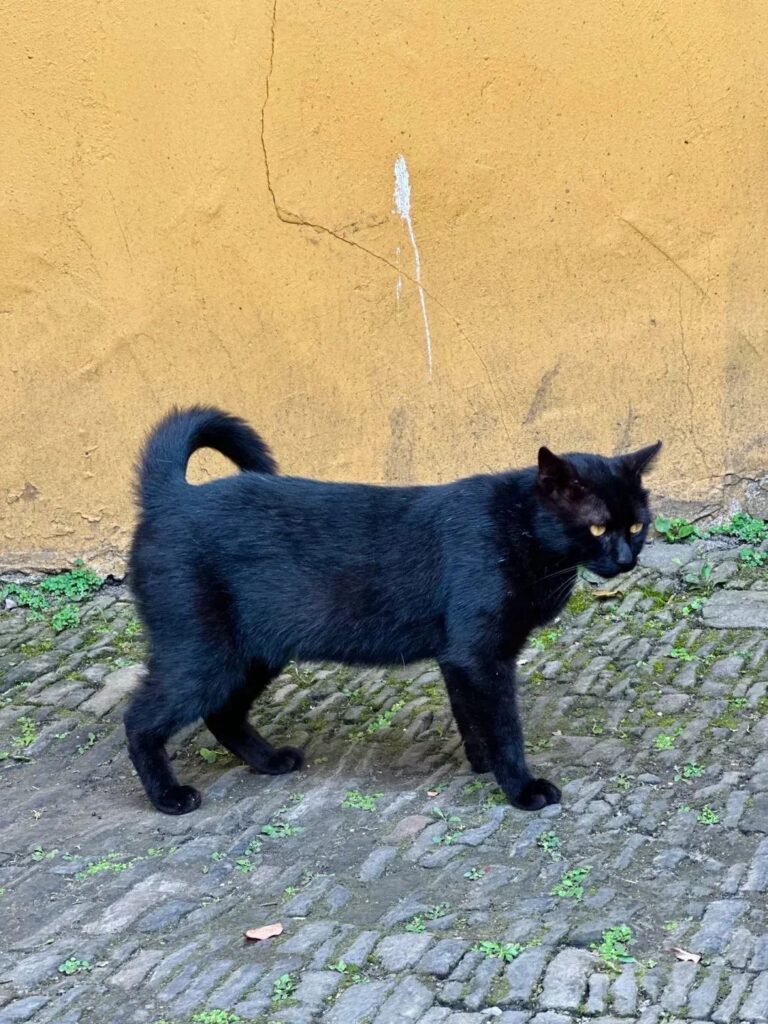
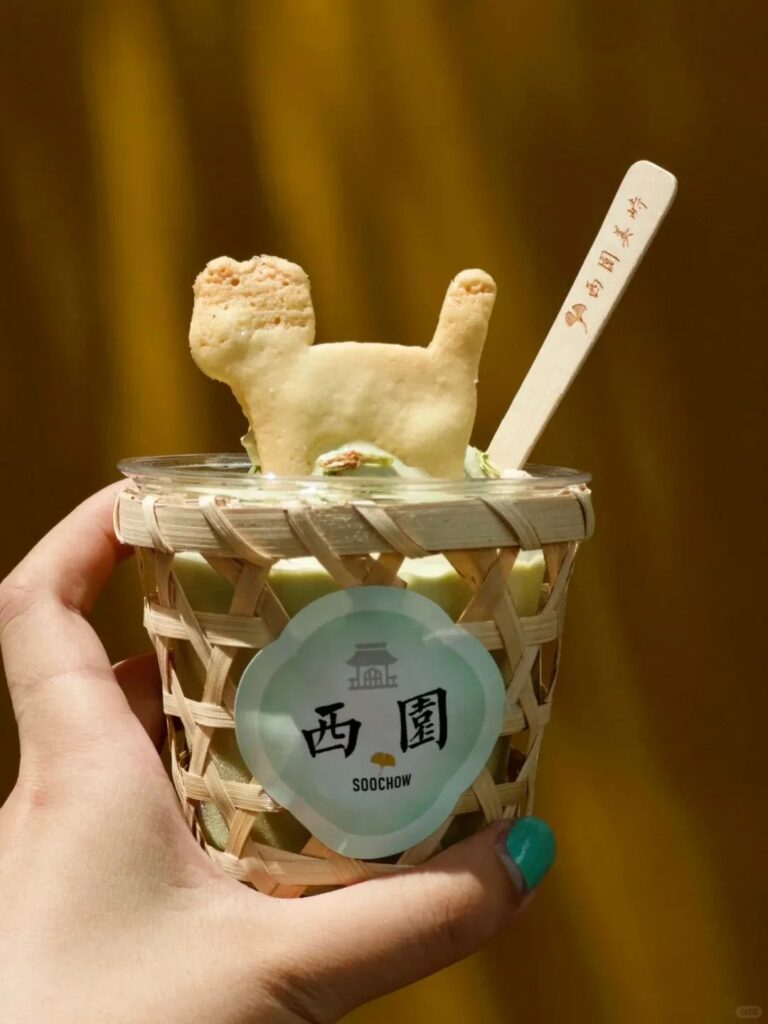
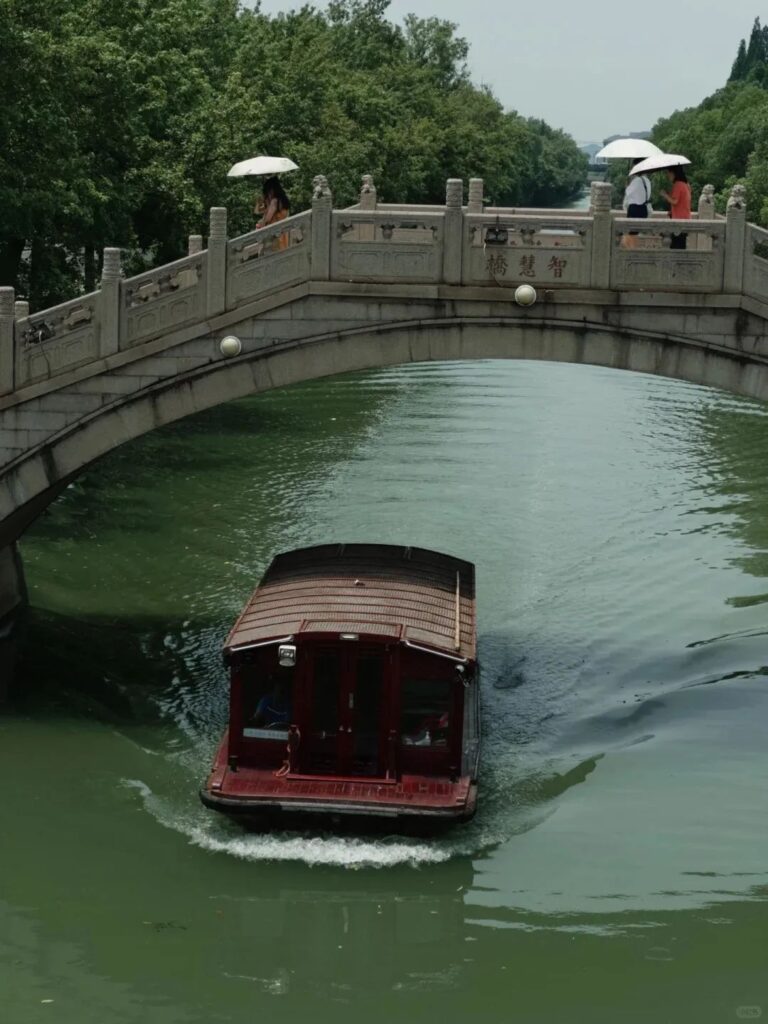
Note: When entering, take three incense sticks and bow to the four directions in front of the Heavenly Kings Hall. All your wishes will come true, and you will have a smooth and healthy journey. Remember not to take photos of the Buddha statues, and women should not wear shorts or short skirts. Avoid stepping on thresholds.
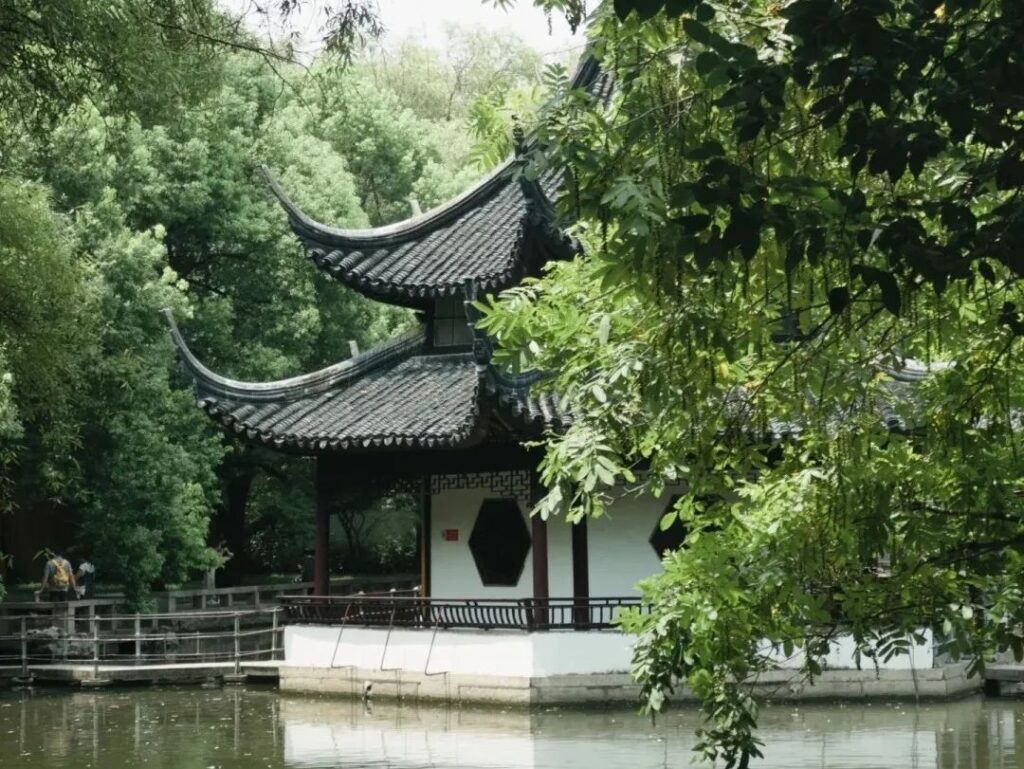
🎫Tickets: No reservation required. Scan the QR code at the entrance to purchase tickets for 5 yuan/person. Free entry for those over 60 years old. If you want a paper ticket, purchase it at the ticket window.
⏰Opening Hours: 8:00-17:00
Jinji Lake, Suzhou
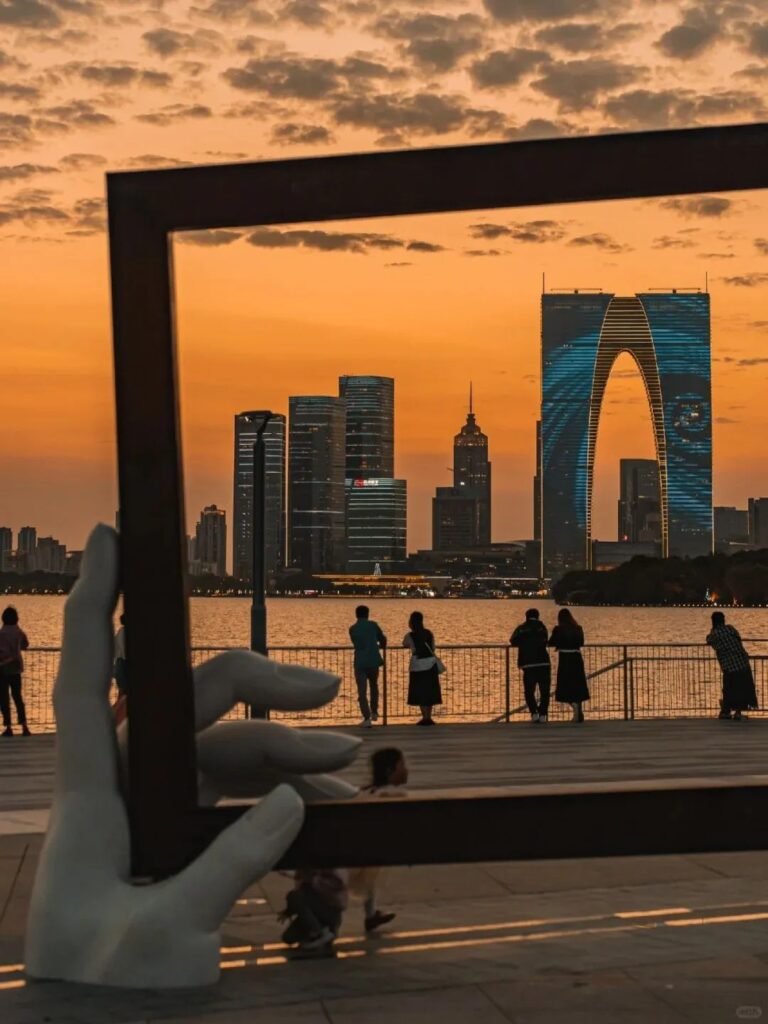
Jinji Lake is a famous scenic spot in Suzhou, perfect for hiking or picnicking. The beautiful lake scenery and water make it suitable for a leisurely walk along the lake in the evening. When the lights come on, you can fully enjoy the city’s night view. If you’re willing to walk more, you can take a stroll around Jinji Lake and enjoy the various attractions.
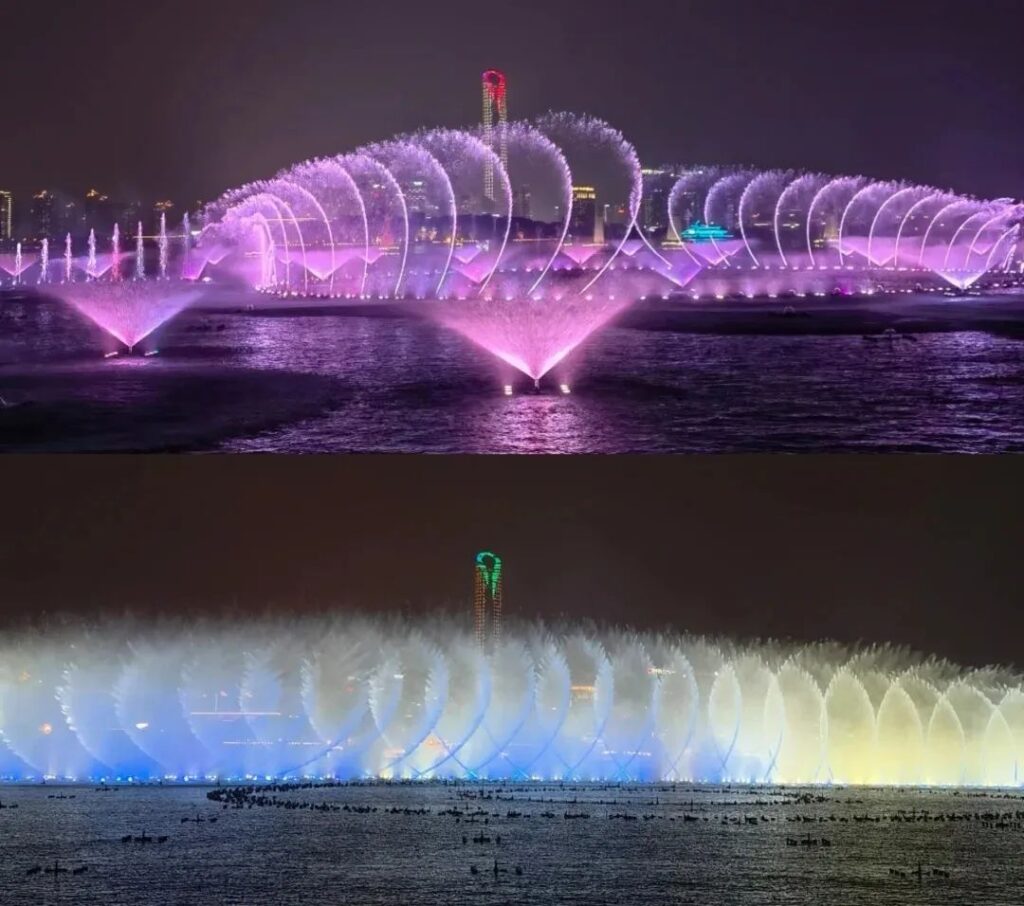
📍Address: Jinji Lake, Suzhou
🎫Tickets: Free
⏰Fountain: Located at the Oriental Gate, open from 19:30-19:50 every Friday, Saturday, and public holidays.
Culinary Guide

It is said that Northerners love noodles, but Suzhou-style noodles are also very famous. When you come to Suzhou, you must try Suzhou-style noodles!

Old Suzhou residents start their day by eating noodles, but Suzhou-style noodles have gone beyond the scope of a breakfast meal. It can be said to be the most exquisite bowl of noodles in China. The soup, noodles, toppings, and even the bowl used to serve the noodles are all carefully considered, which is a true reflection of the refined life of Suzhou people.
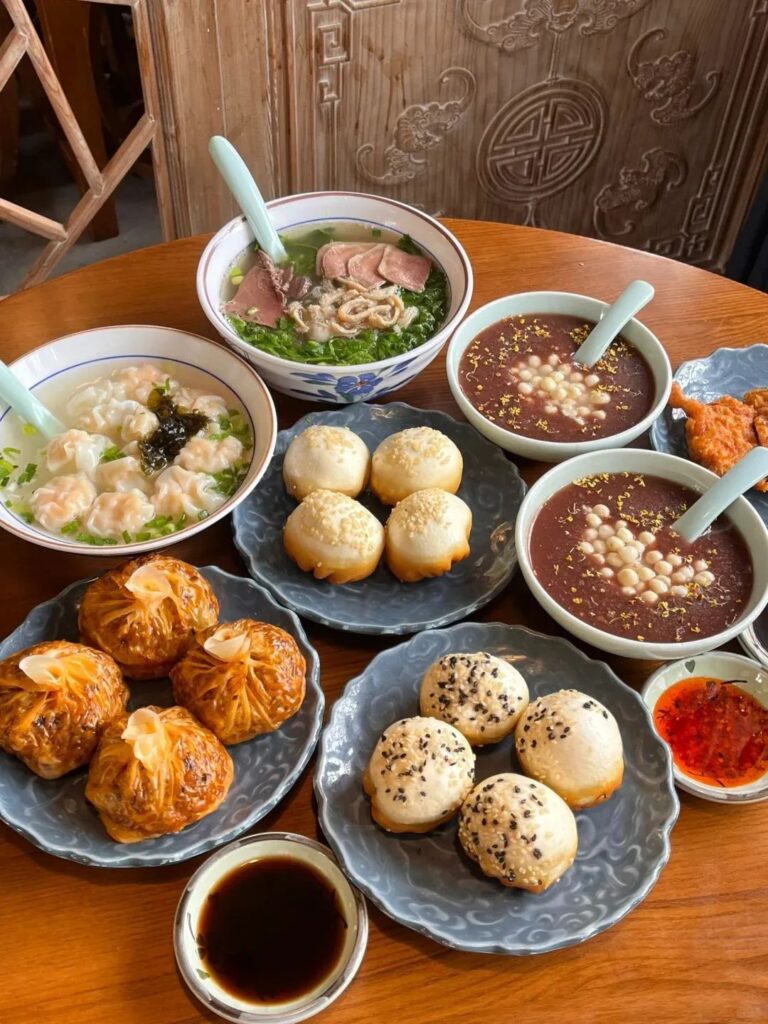
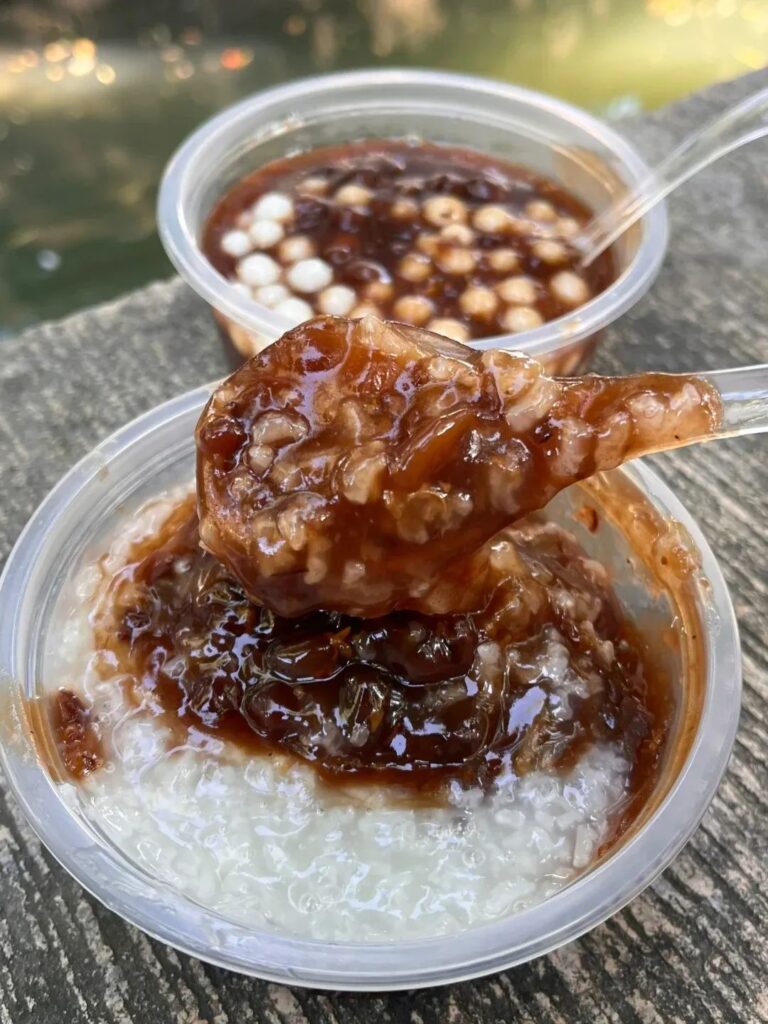

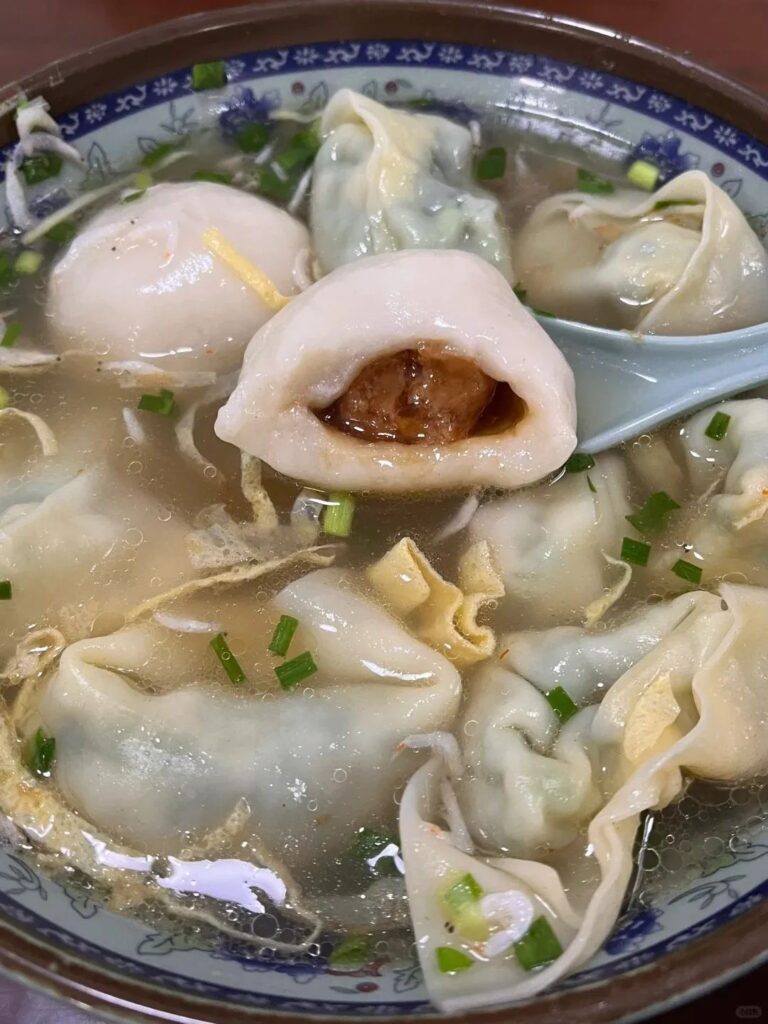
In addition to noodles, there are various other snacks: Suzhou-style mung bean soup with added peppermint water, which is cool and refreshing; freshly wrapped and fried shengjianbao (pan-fried buns) with lots of soup inside; and all kinds of sweet and sticky cakes and pastries… The specific shops will not be introduced here, but if you follow the rankings on food review websites, you can’t go wrong~
Travel Tips
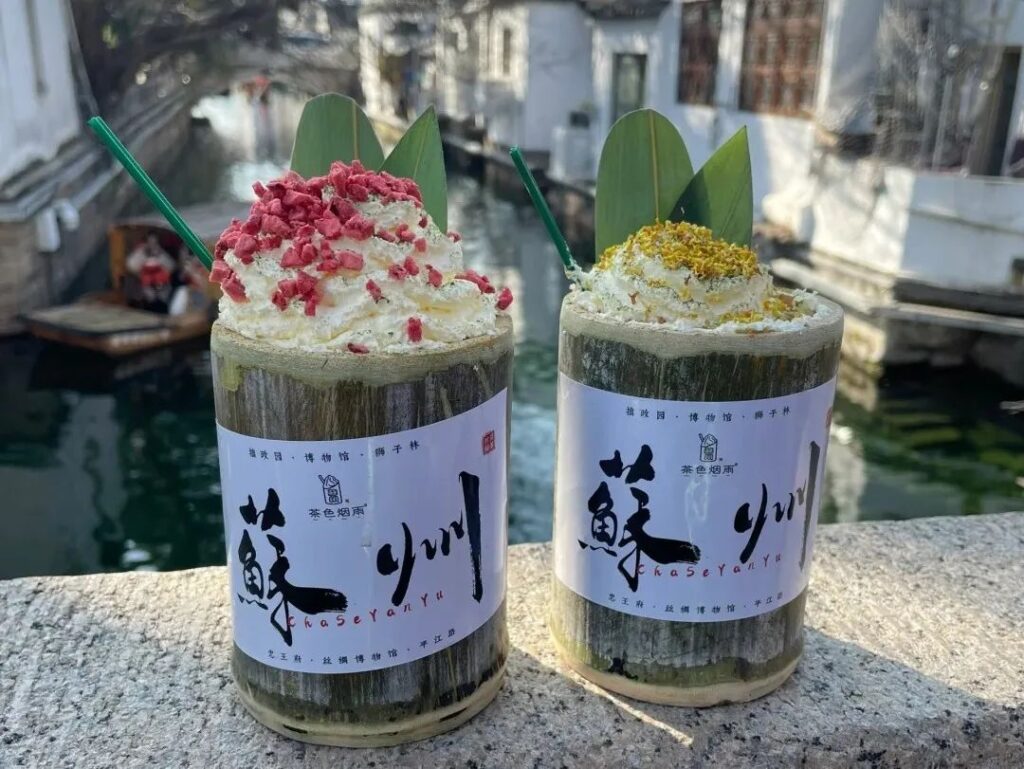
✅ Many gardens have magnolia flowers, and the Ou Garden has the most people viewing the flowers;
✅ The Suzhou Metro can directly reach many gardens, which is very convenient. During your garden tour, you can also take a look at Pingjiang Road, Guanqian Street, and Qili Shantang, which are also very characteristic;
✅ During peak seasons and holidays, some attractions may require reservations, so you need to check the official announcements in advance;
✅ Hanshan Temple is famous and more commercialized. If you like temples, you can go to Xiyuan Temple, which is much more tranquil.
Related Articles:
